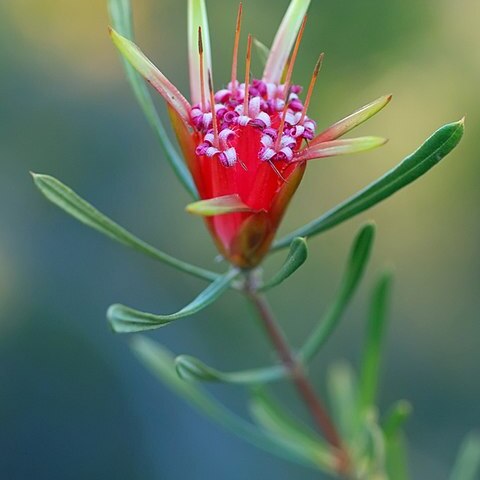An erect shrub. It can grow to 2 m high. It spreads 1-1.5 m wide. The small branches are hairy. The leaves are narrow and 3-7 cm long by 5 mm wide. They are dark green above and paler and hairy underneath. They have a sharply pointed tip. The flowers are red and tubular. They are rich in nectar. The occur in clusters of 7 near the ends of branches. They have reddish-green bracts around them. These are about 5 cm long. The fruit is woody and 2.5 cm long. It has a short beak and 2 prominent horns.


